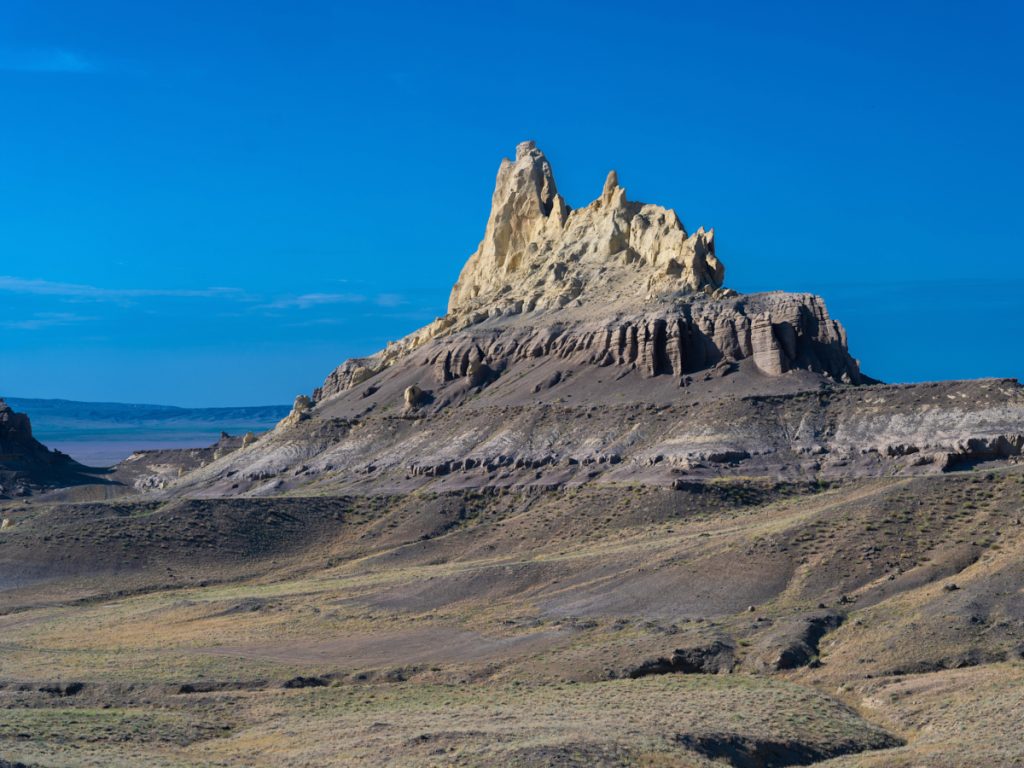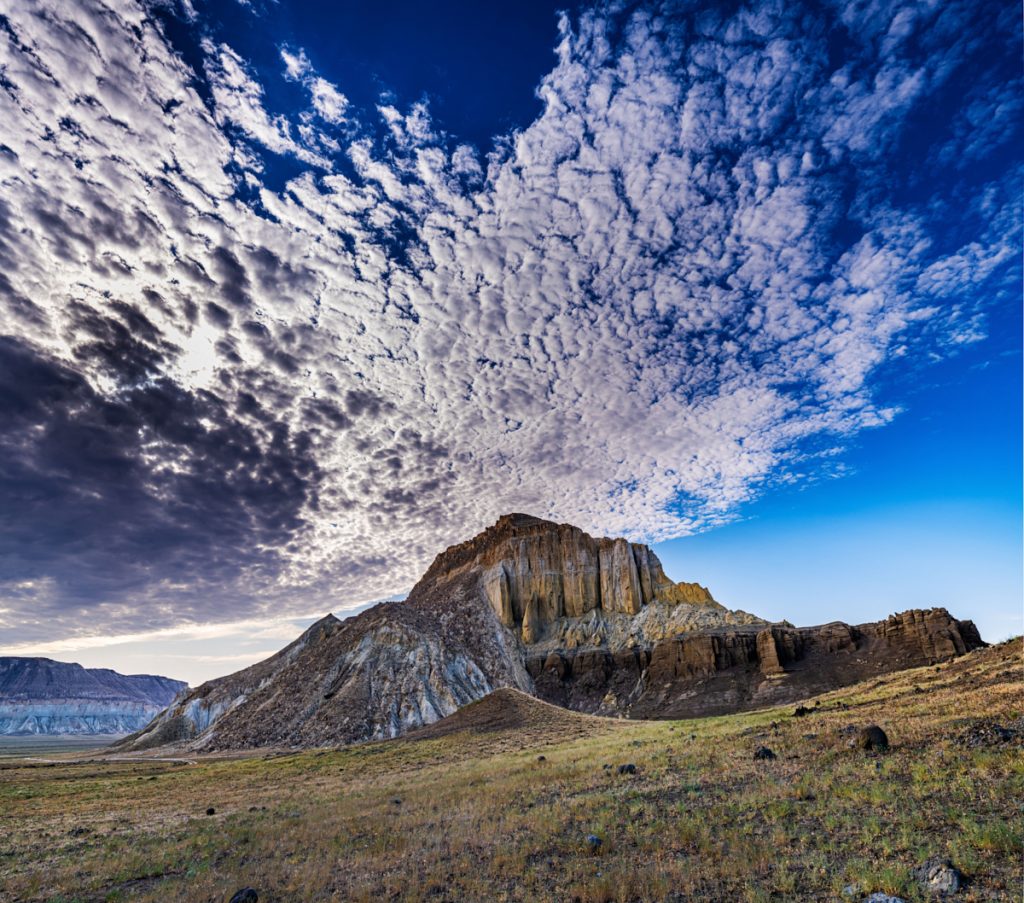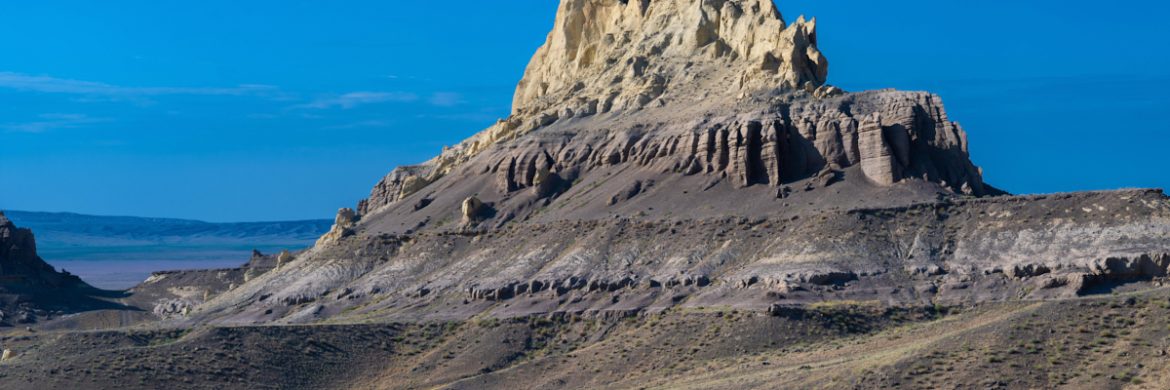The Airakty-Shomanay valley represents the most beautiful chain of sedimentary mountains in Mangystau. From a distance, these mountains resemble towers and fortress walls.

The renowned Ukrainian poet and artist Taras Shevchenko visited this region in 1851, where he created a collection of paintings and named it “The Valley of Castles”. There are two assumptions about the origin of the name of the mountains, which locals call Airakty-Shomanay. One explanation suggests that the mountain was named “Airakty” due to its horseshoe-shaped ridge, while another proposes that it derives from the ancient Turkmen word “airak”, meaning “argali”.

Millions of years ago, this area lay at the bottom of the Tethys Ocean. However, 25 million years ago, a powerful earthquake caused an ancient layer of the Earth’s crust, several kilometers thick, to rise from the ocean floor to the surface. This area is now known as the Mangystau Peninsula. About 8 million years ago, the Turan Plate began drifting westward and slowly rising, shaping the modern landscape by eroding soft chalk rocks through the action of rain and wind. This natural process has formed gorges, mountain ruins, and capes into their current magical and beautiful forms. Geologists predict that these sedimentary mountains Airakty created by nature could vanish from the Earth’s surface in around 5-7 thousand years.

Since the late 6th century, the Great Silk Road’s caravan has traversed the Mangystau region, giving rise to legends of an ancient treasure hidden within this valley. Indeed, local shepherds occasionally discover silver and gold coins, reinforcing these stories.
The combined length of the sedimentary mountains is 20 kilometers. The tallest peak in the Shomanai range is an unnamed mountain in the southern part, standing at 368 meters above sea level. Following in height is Zhapyrakty, reaching 363.8 meters above sea level, located in the southernmost part of the mountains. In the vicinity of Airakty, as well as Torysh stones, one can find spherical stone formations with diameters of 2-3 meters.
Sedimentary mountains, formed from limestone, boast a variety of paintings. However, these aren’t the ancient people’s art, but the creations of local hunters and shepherds. Many of the paintings depict steppe and desert animals such as camels, horses, and dogs. The depiction of argali is particularly common. Nevertheless, among the most prominent images are an argali with an arrow stuck in it as well as a composition known as the “Picture of the World”, This petroglyph illustrates mouflons, birds, and horses stacked on top of each other.

Within the Airakty valley, one can encounter not only depictions of wild animals but also see live animals as well. Wild animals can roam far away from humans and remain elusive, but if you’re lucky, argali, the keepers of the mountains, catch your eye. Turtles, lizards, and scorpions inhabit the mountain’s foothills. Occasionally, domestic animals like camels and horses graze in this area.
Spring is the recommended time to explore this region, as Sogdian tulips flourish at the mountain’s base, accentuating the valley’s beauty. The journey from the city of Aktau to the mountain by car typically takes around 2 hours, covering a distance of 176 km.



